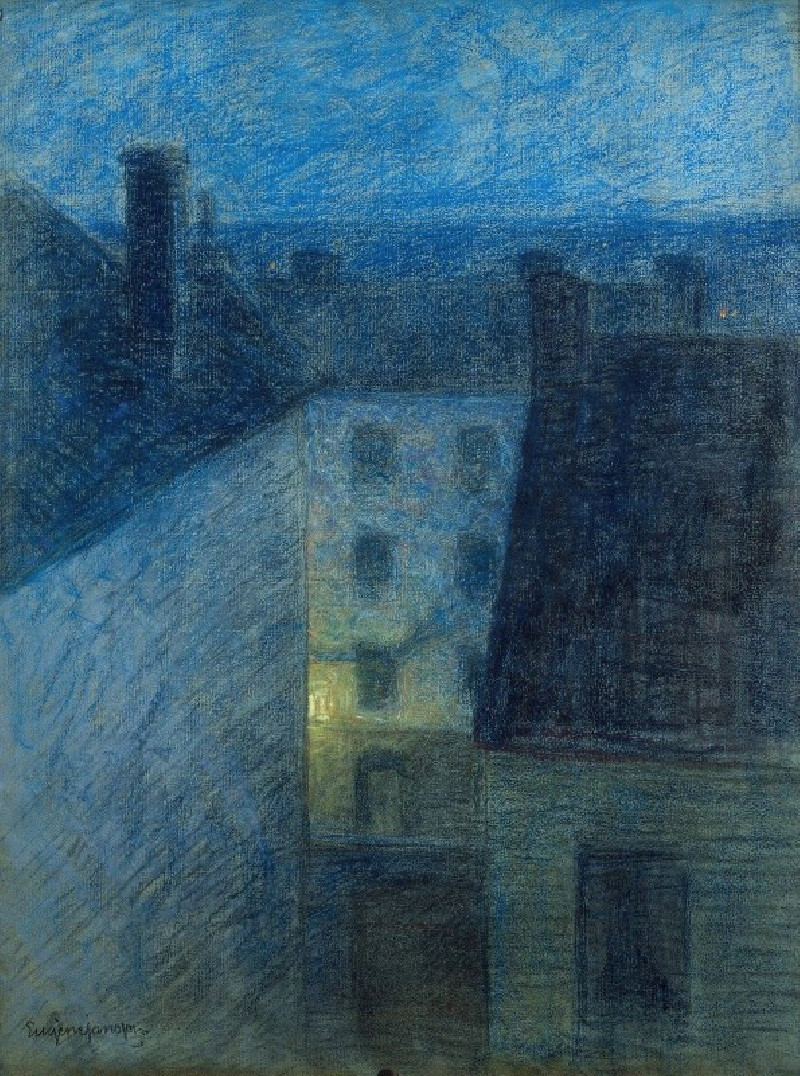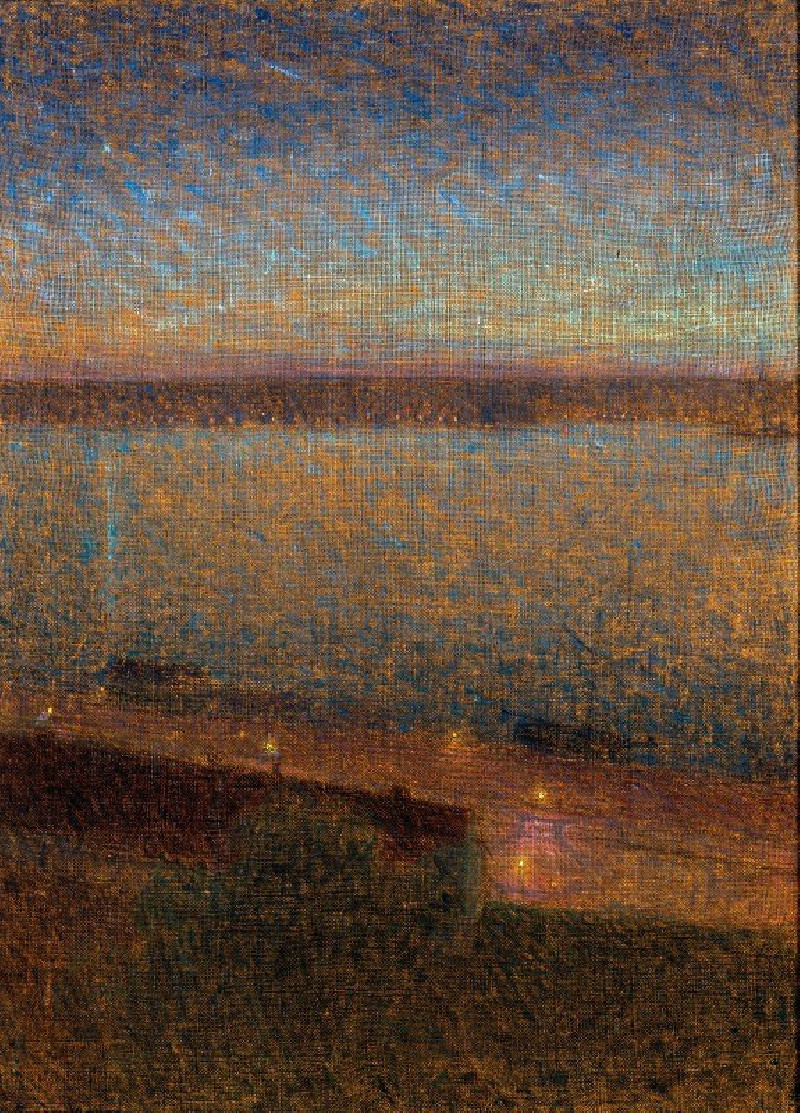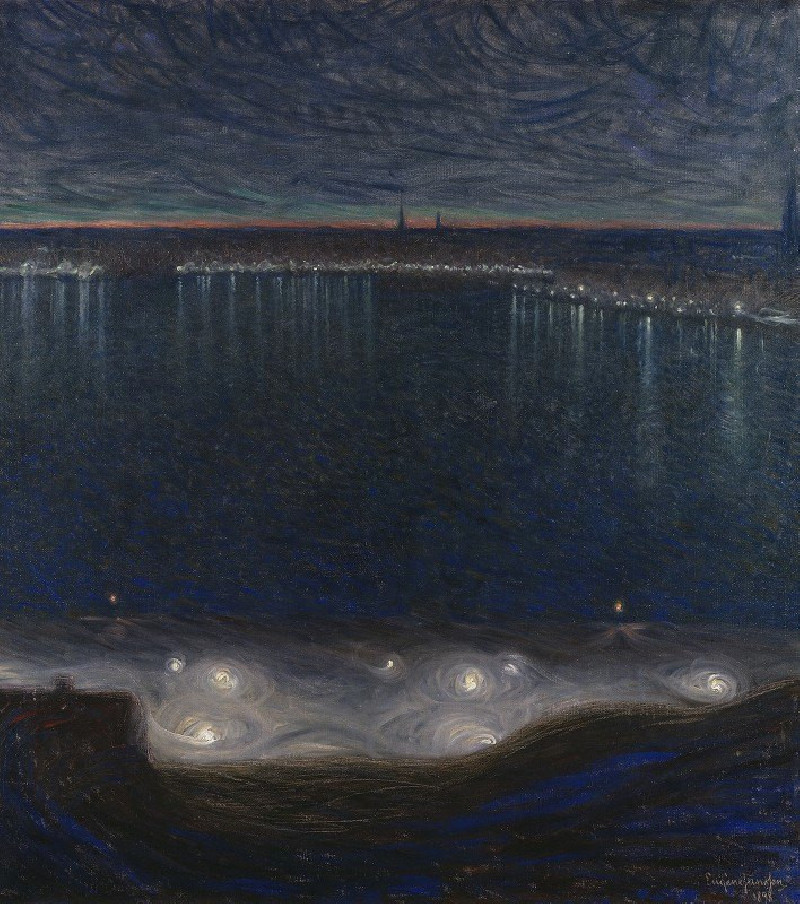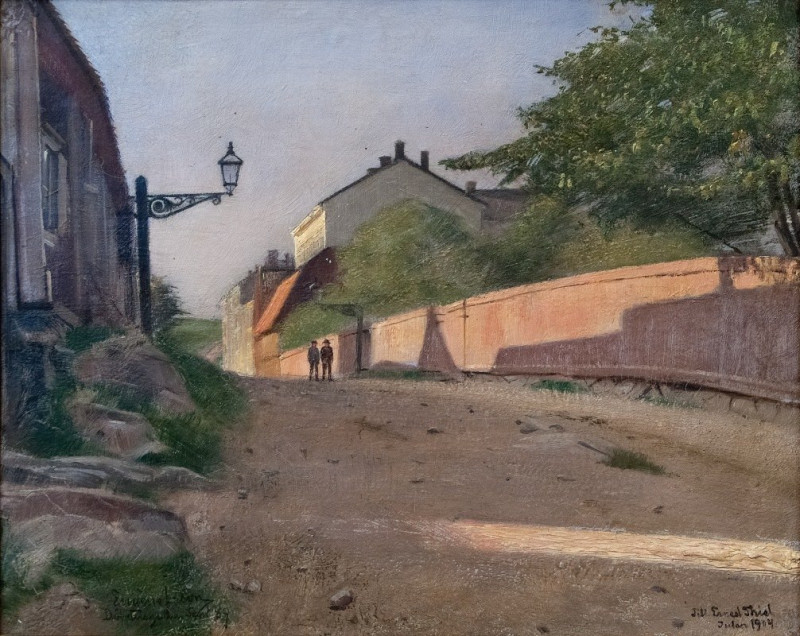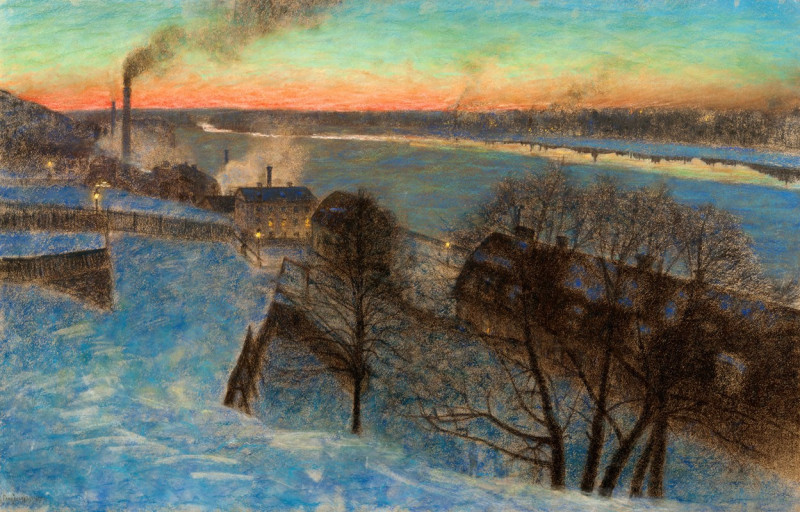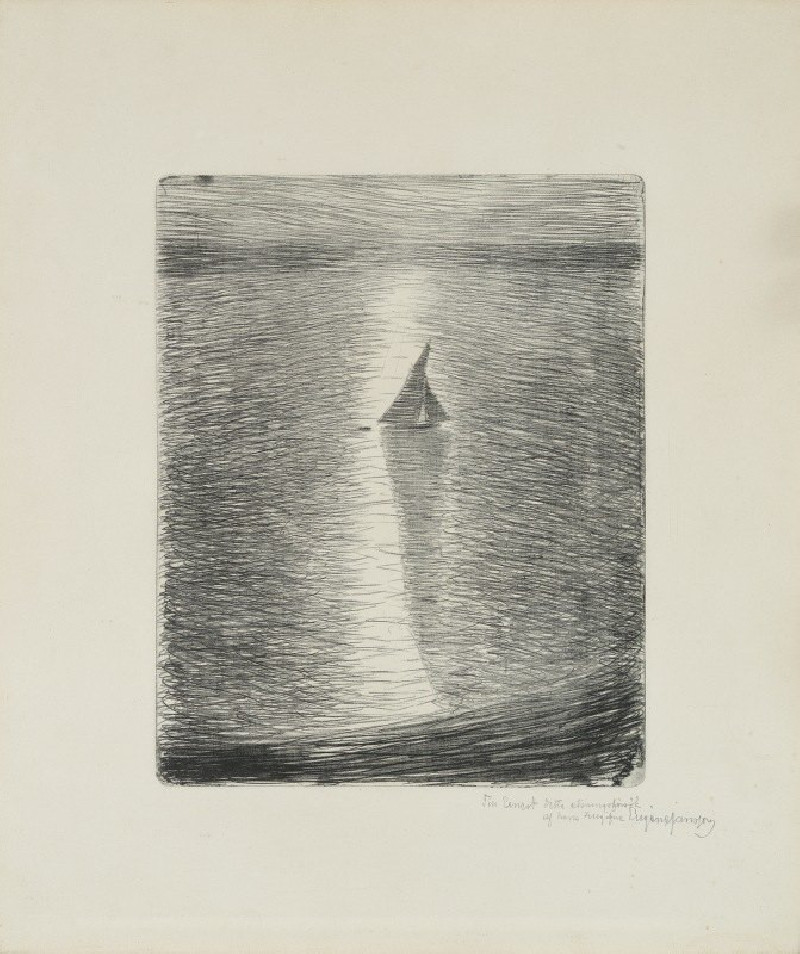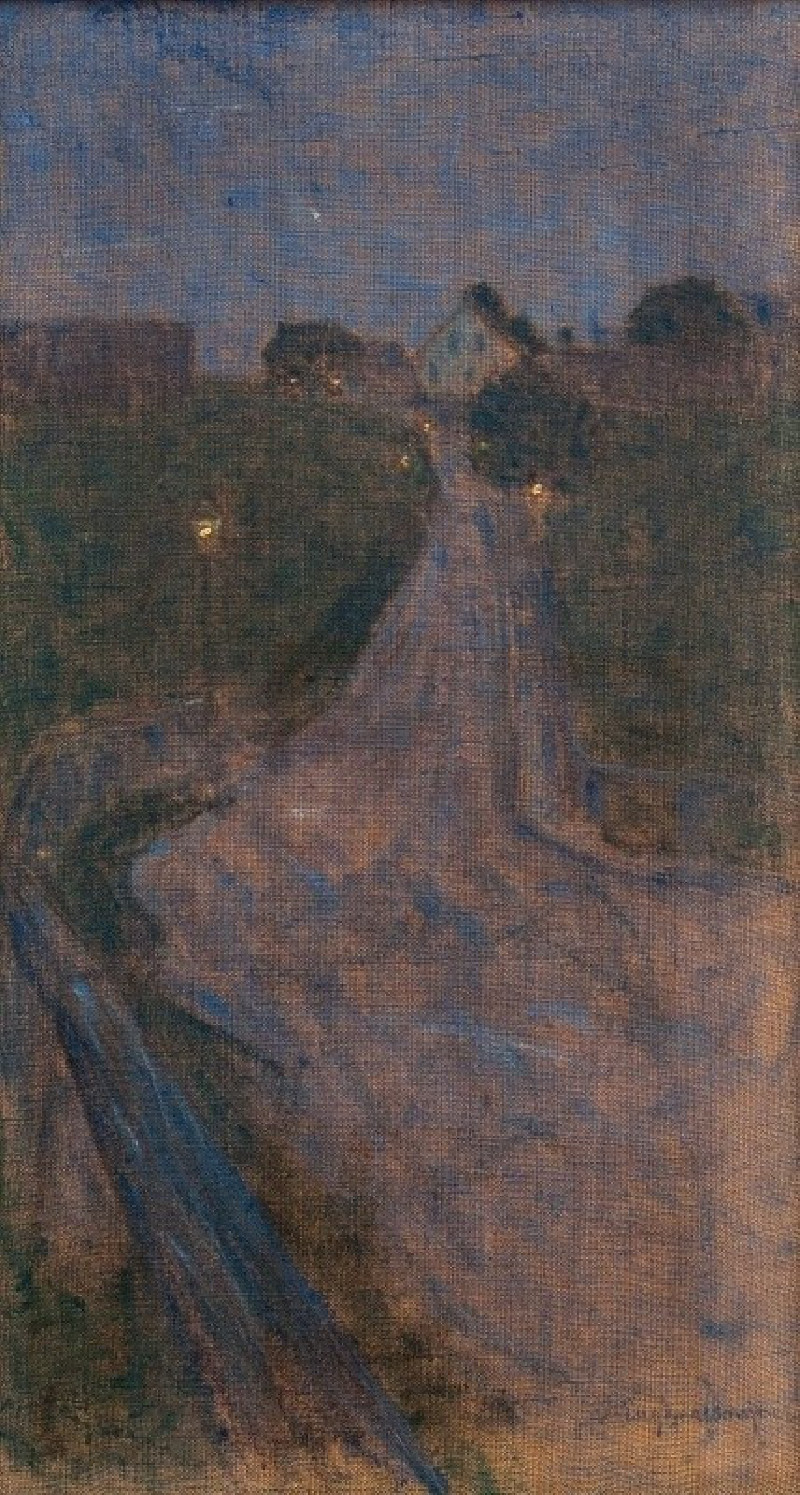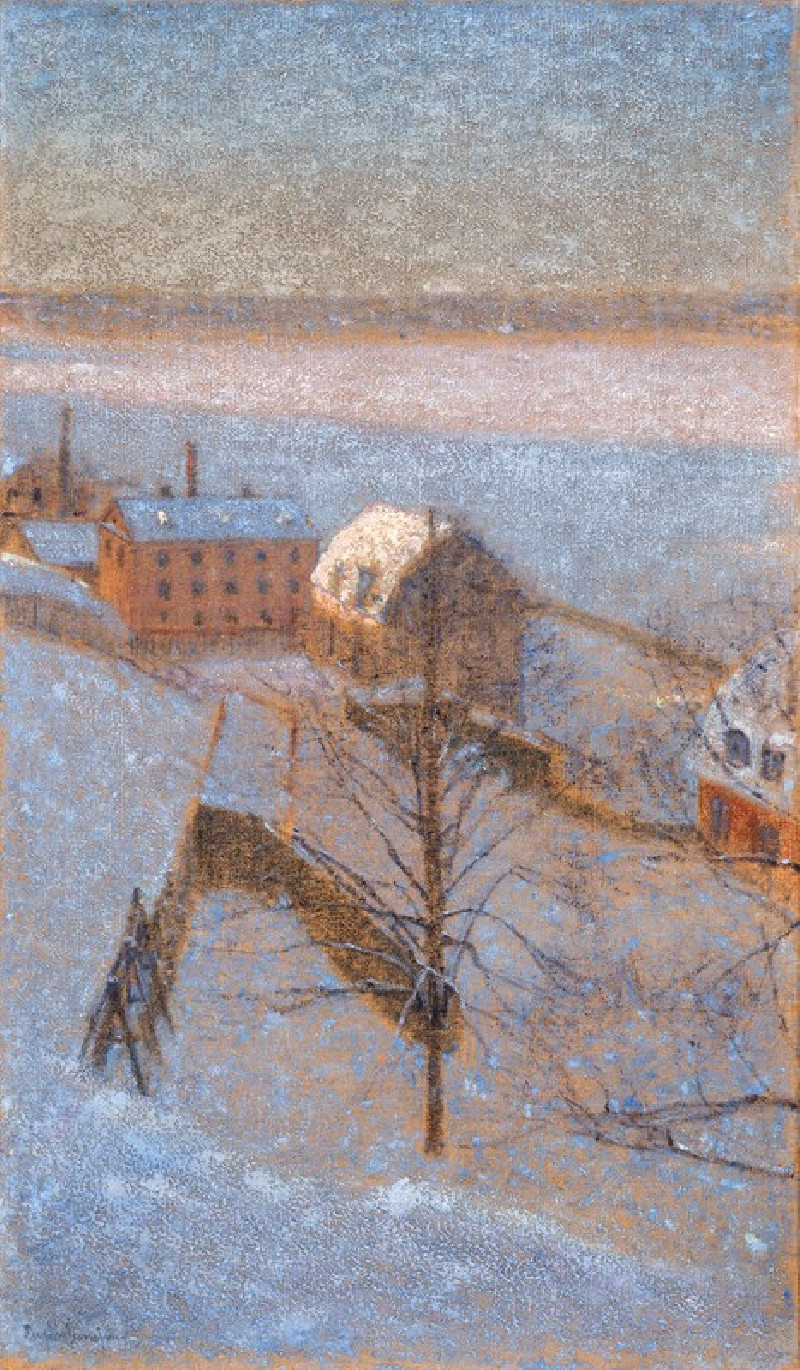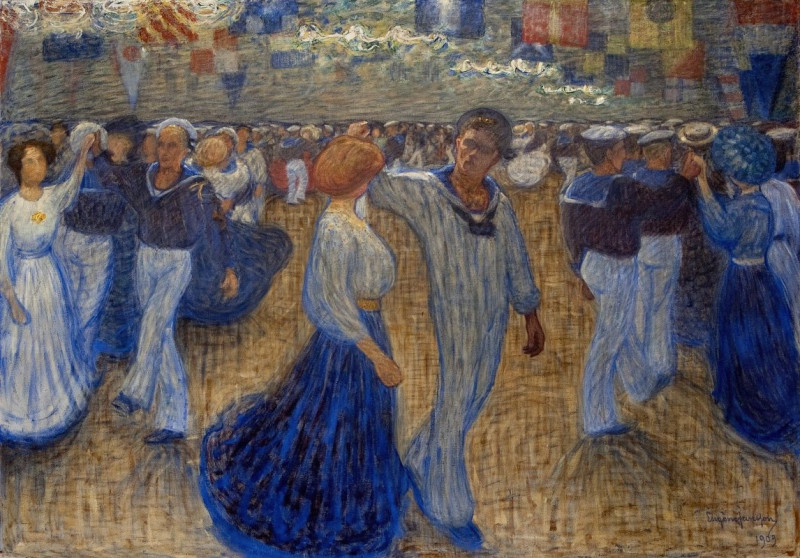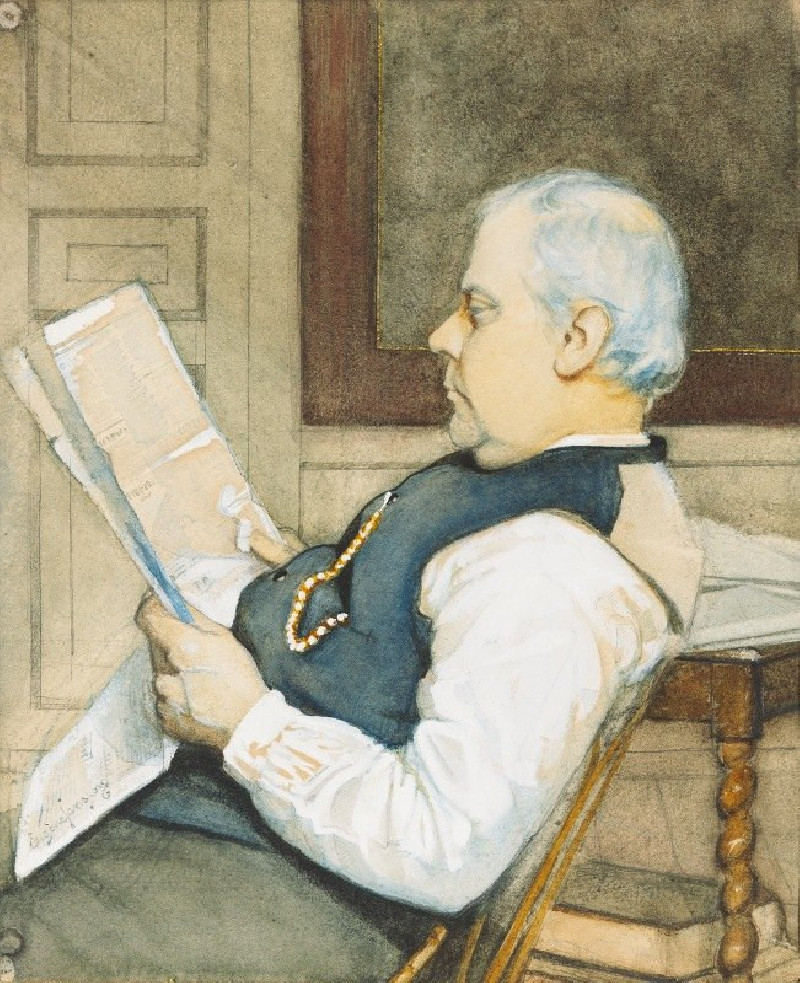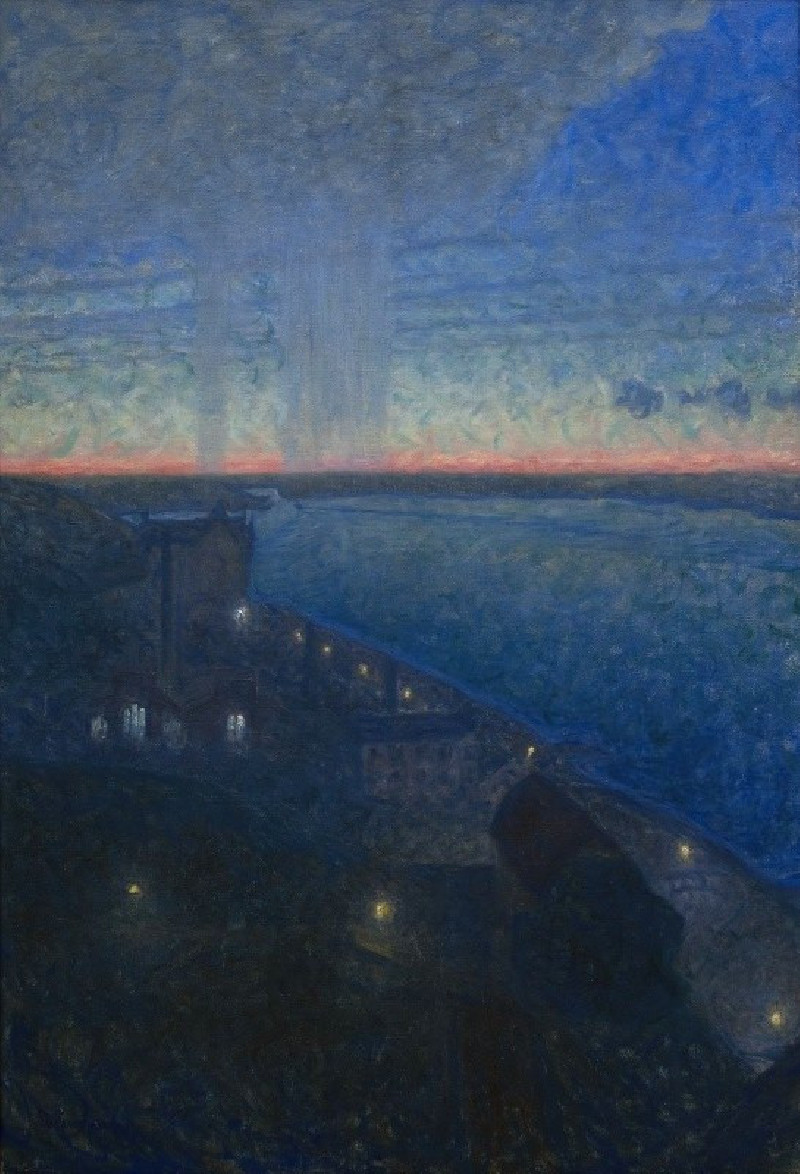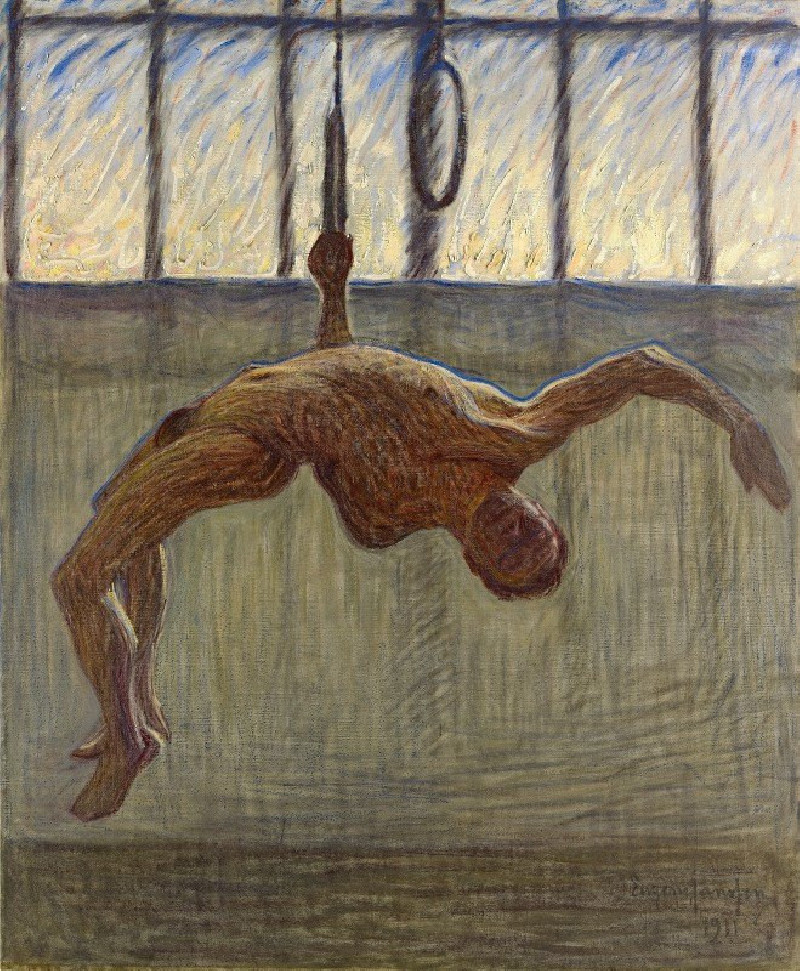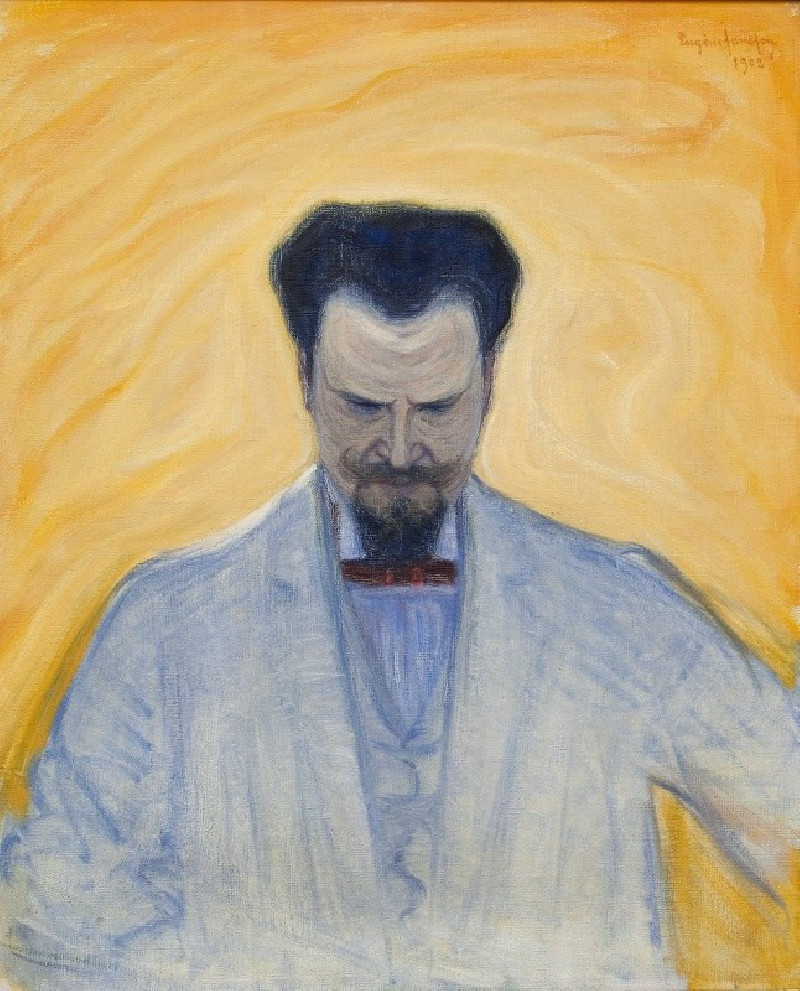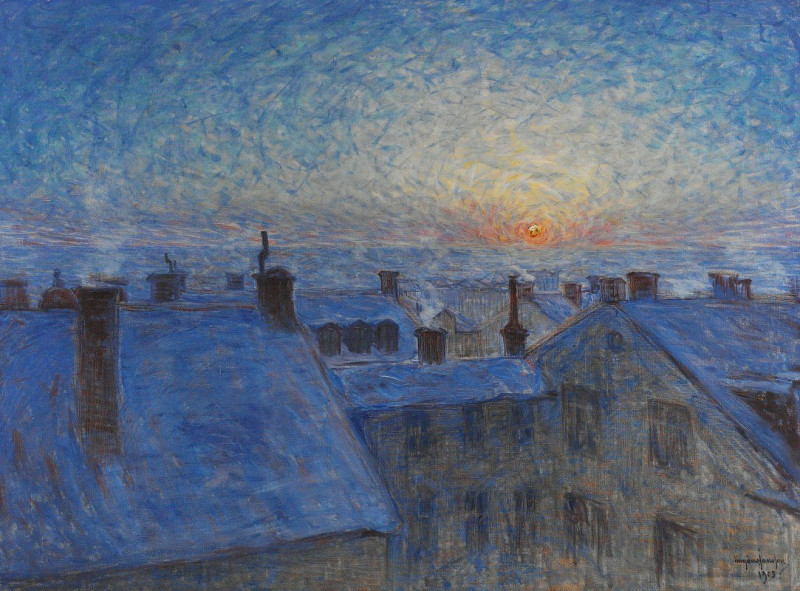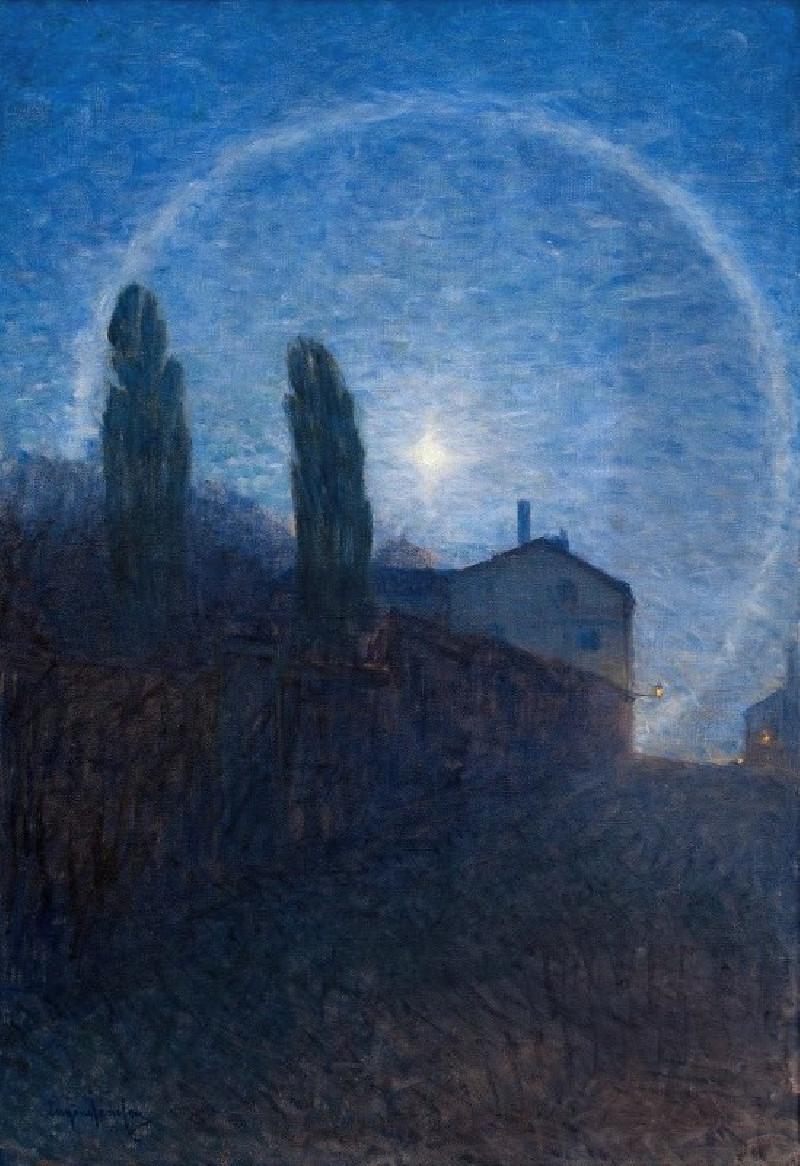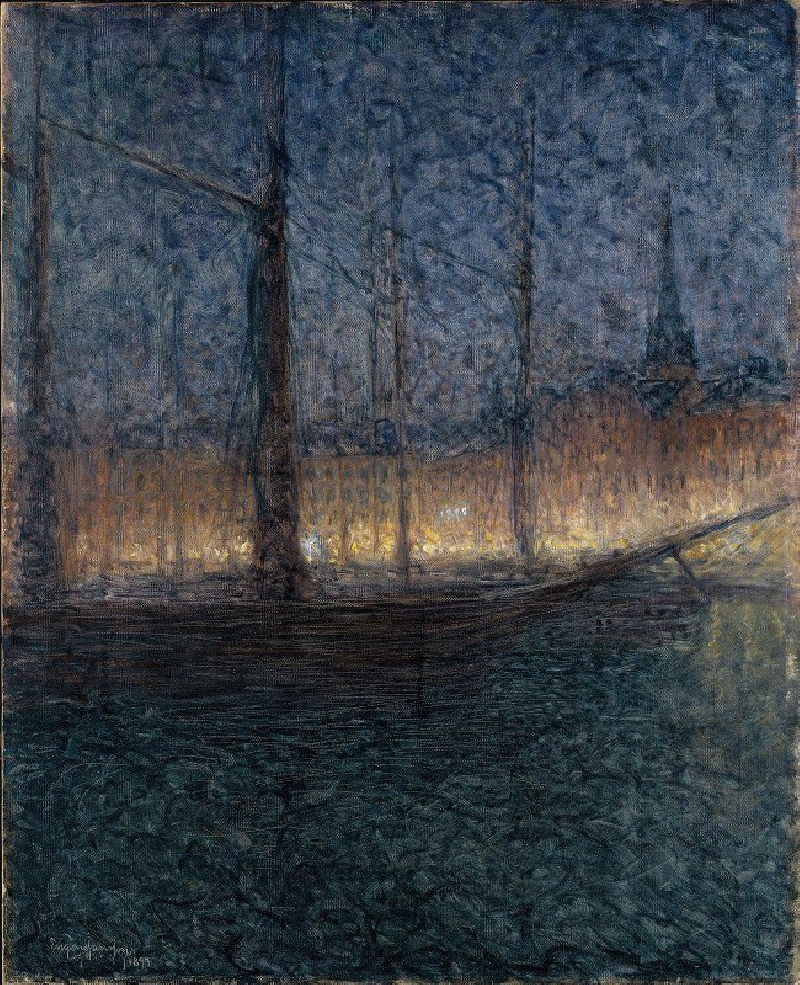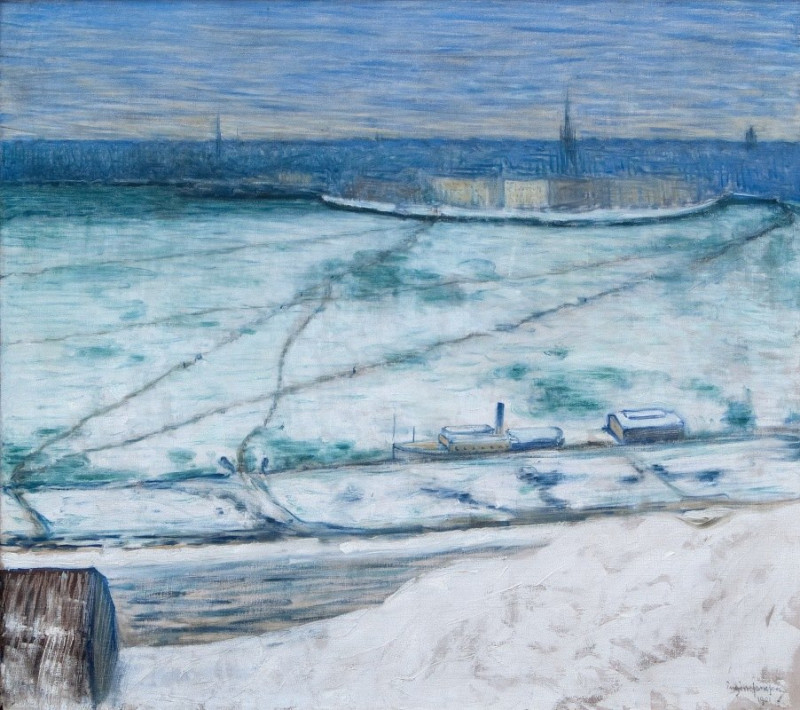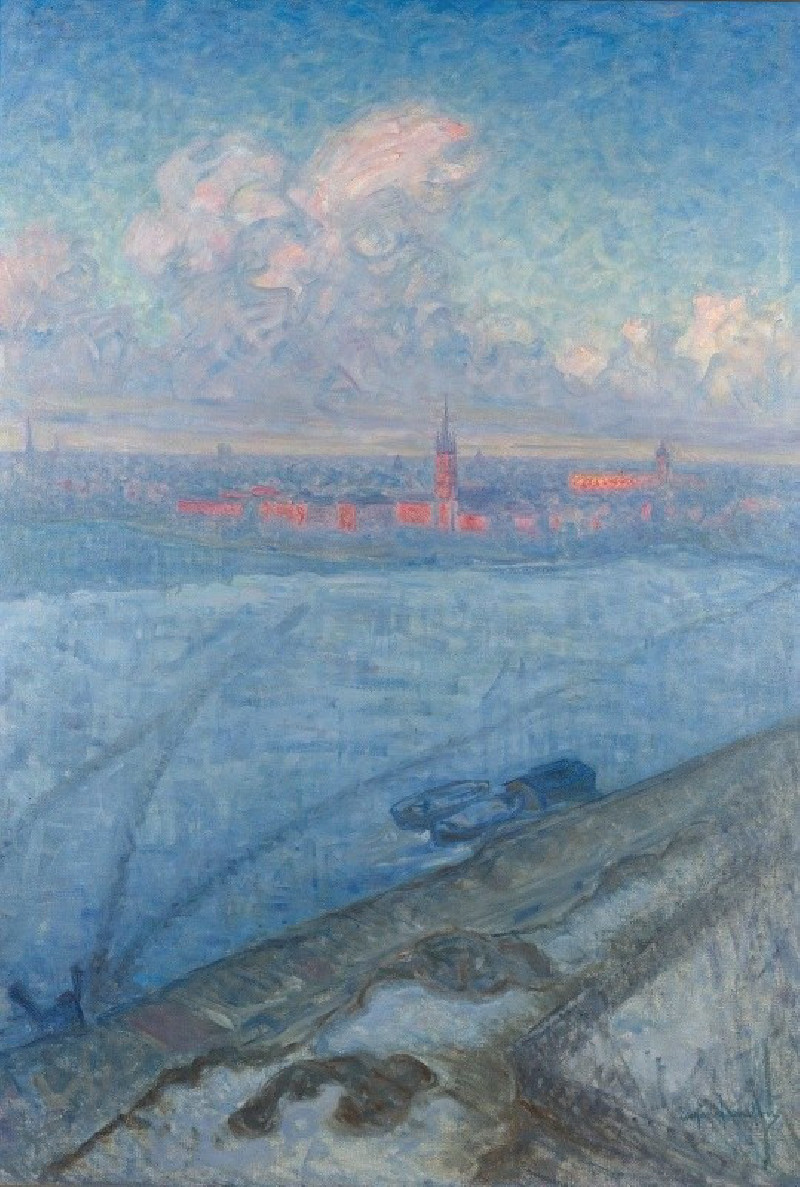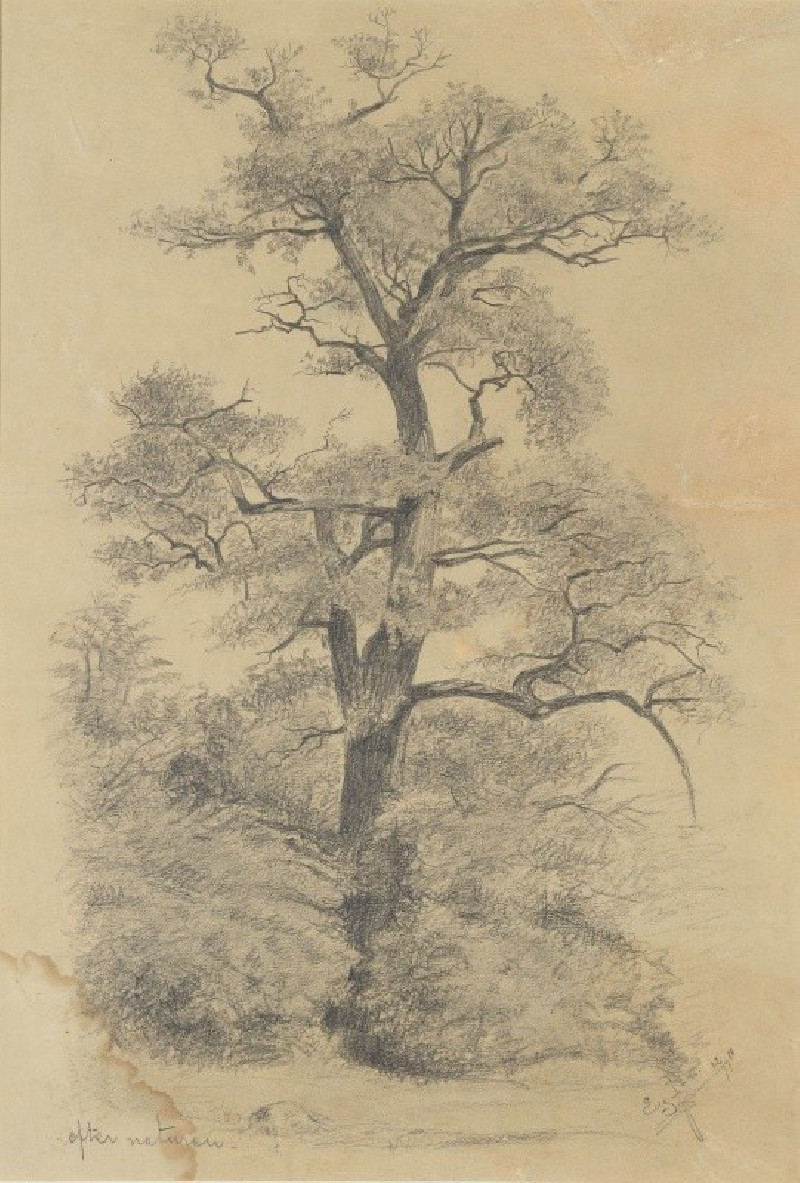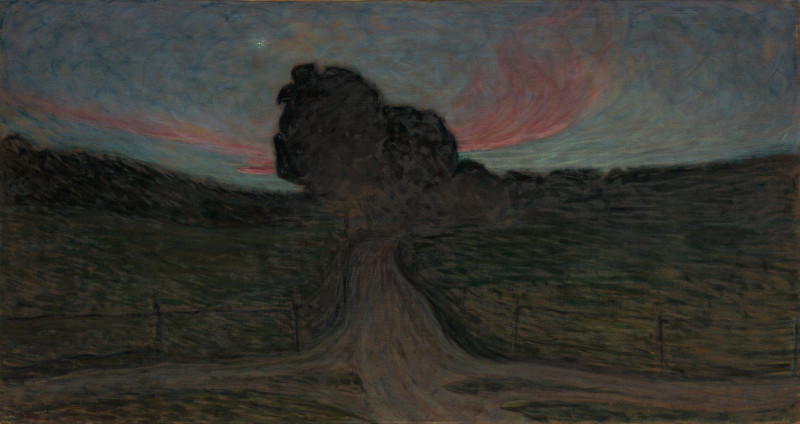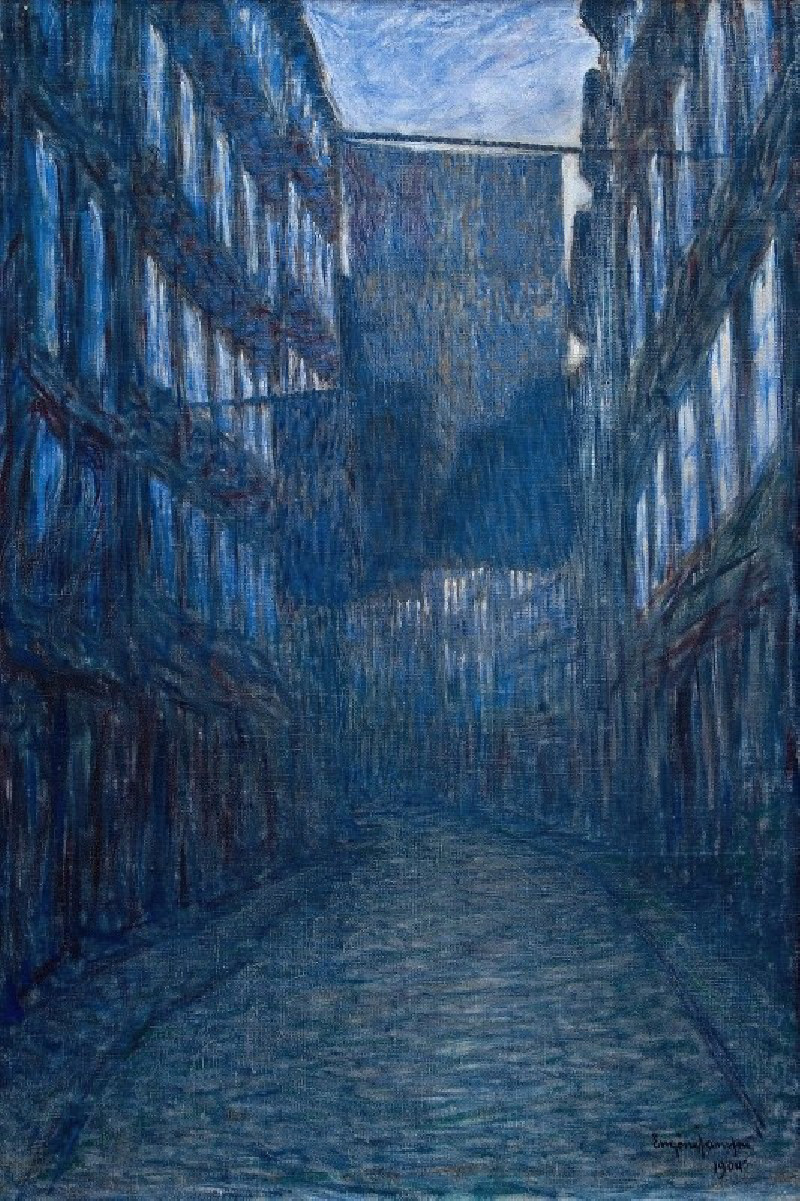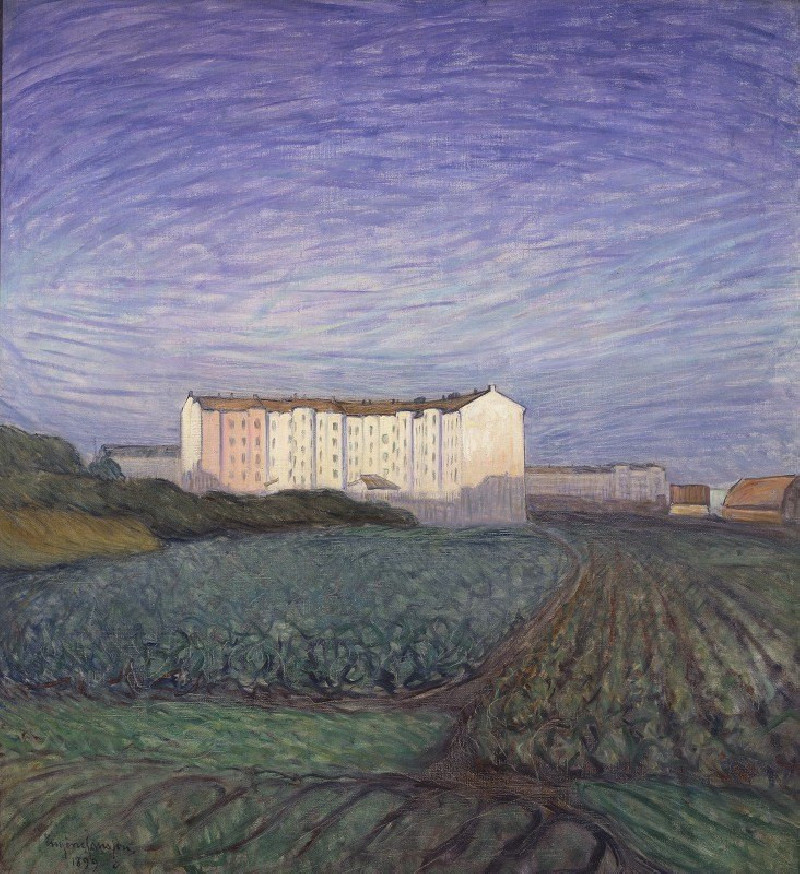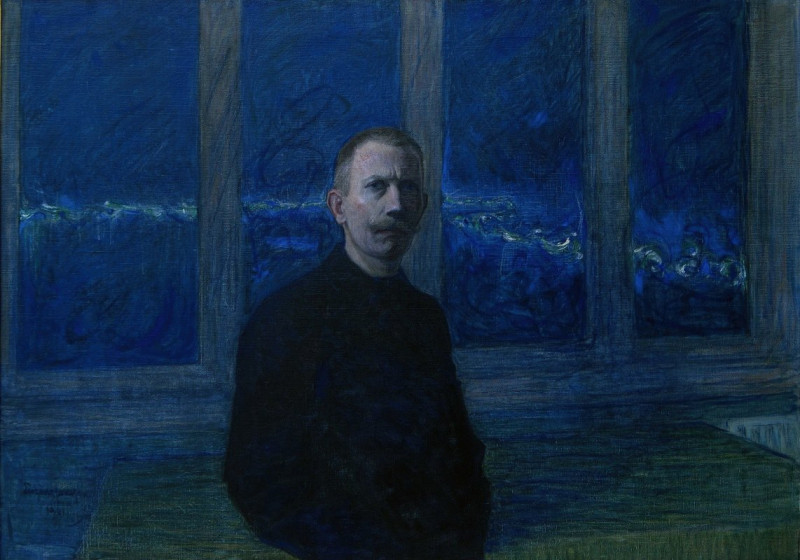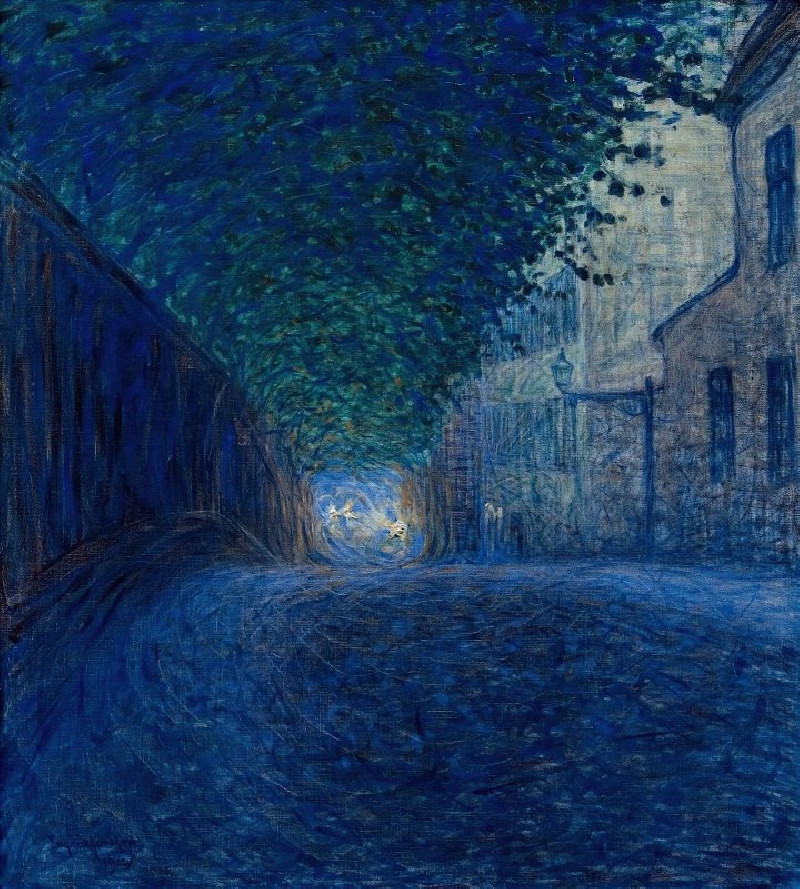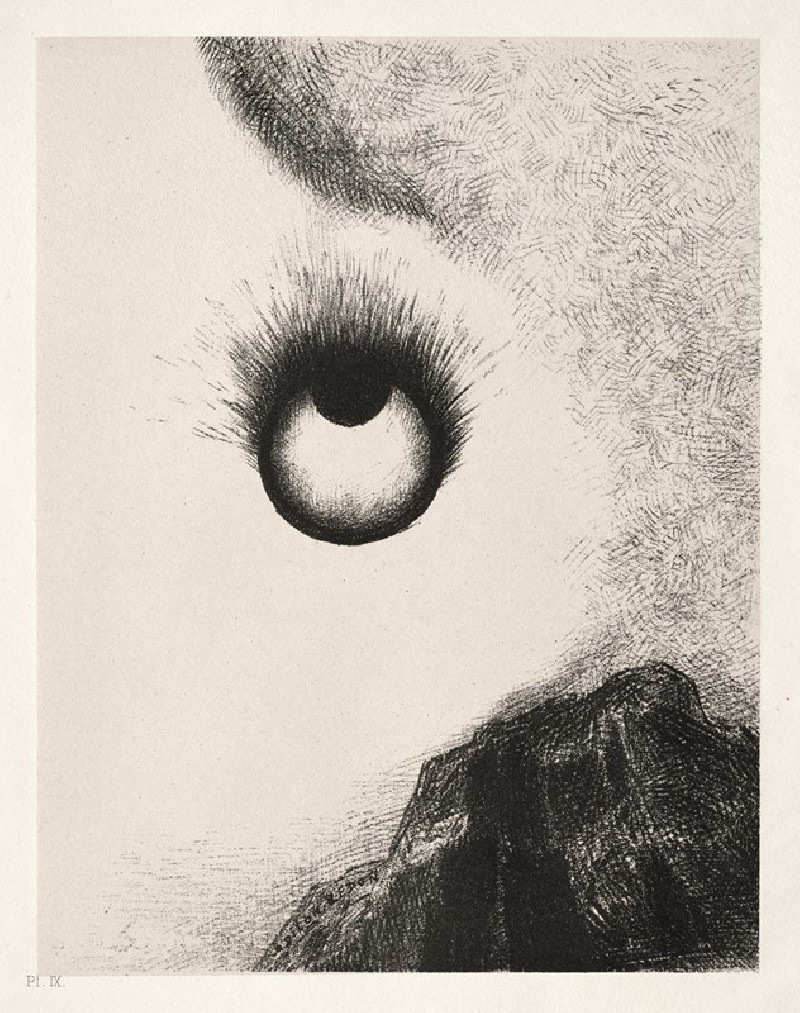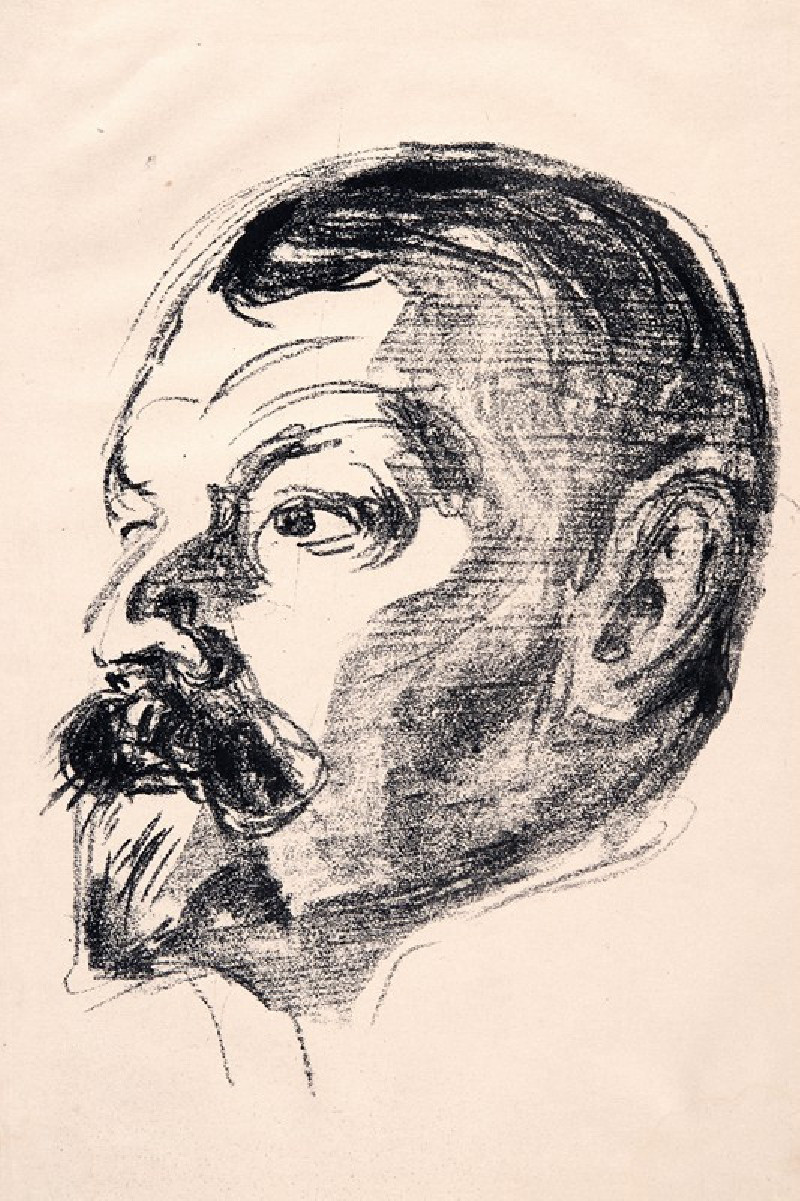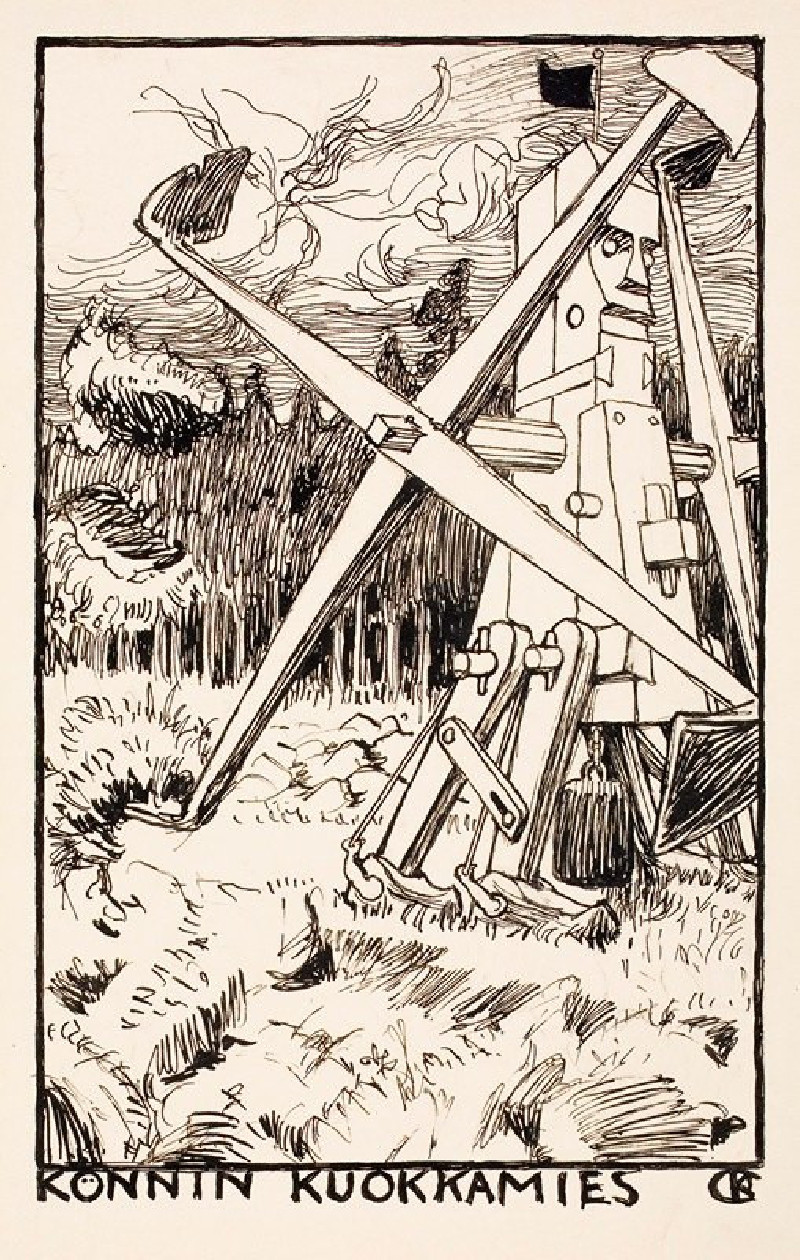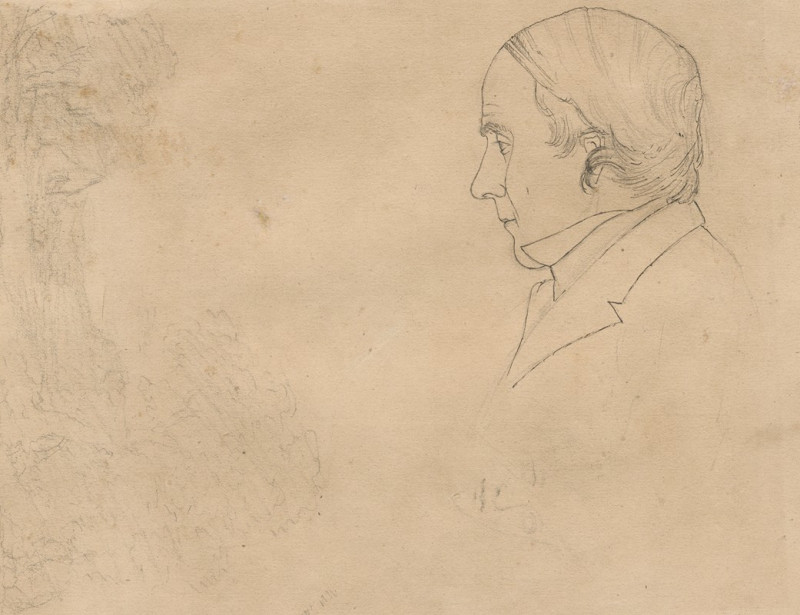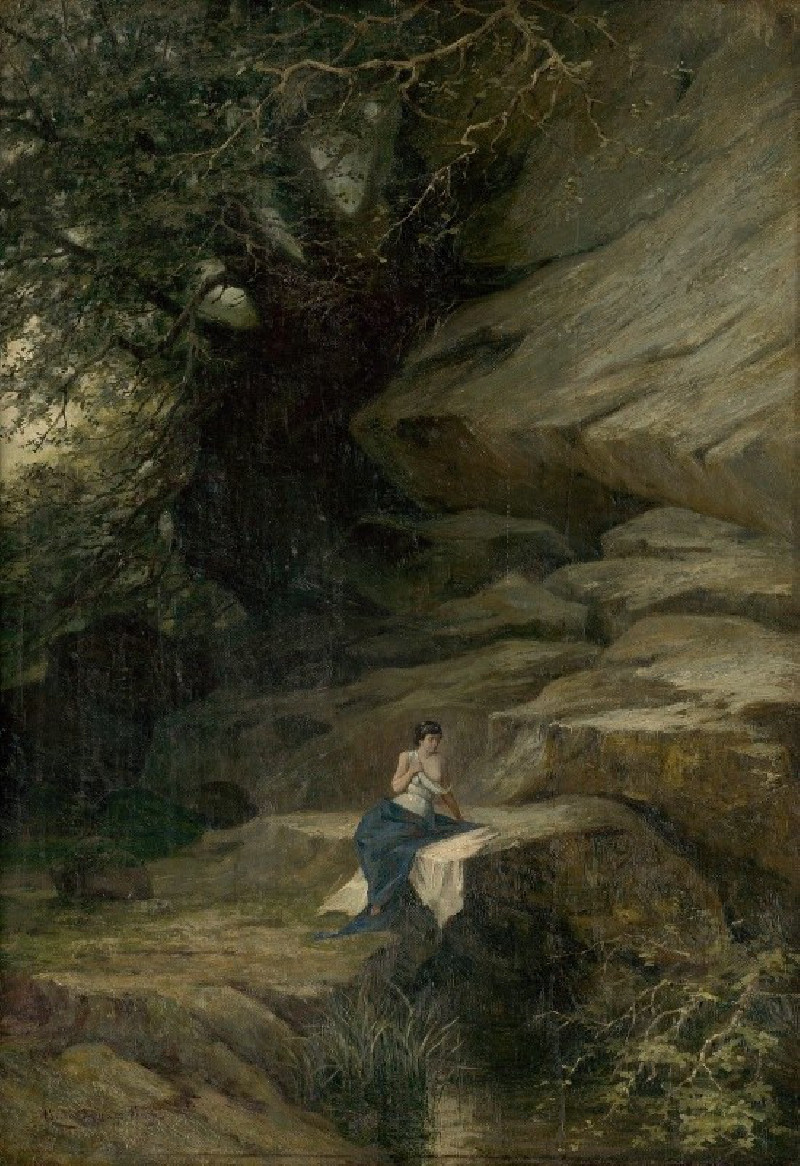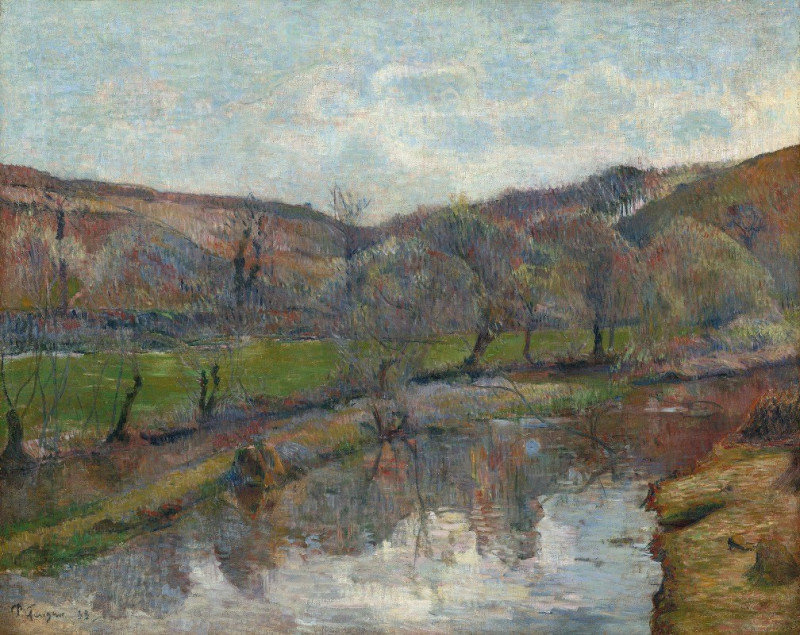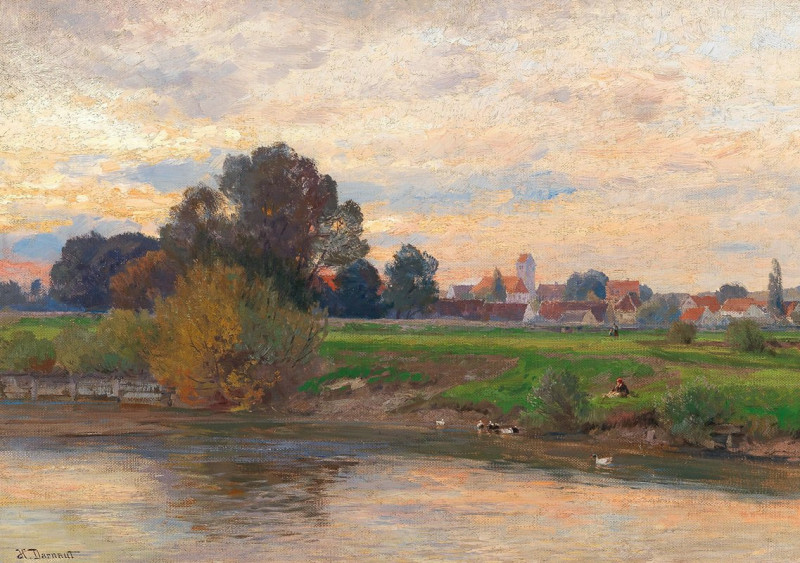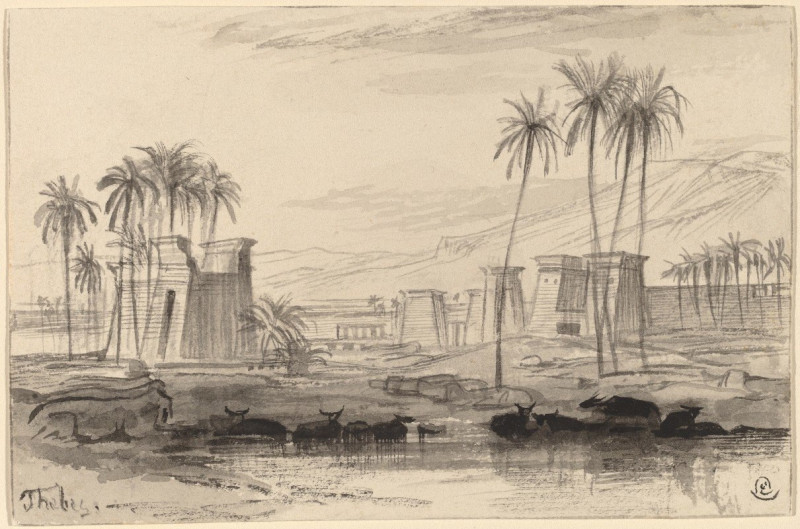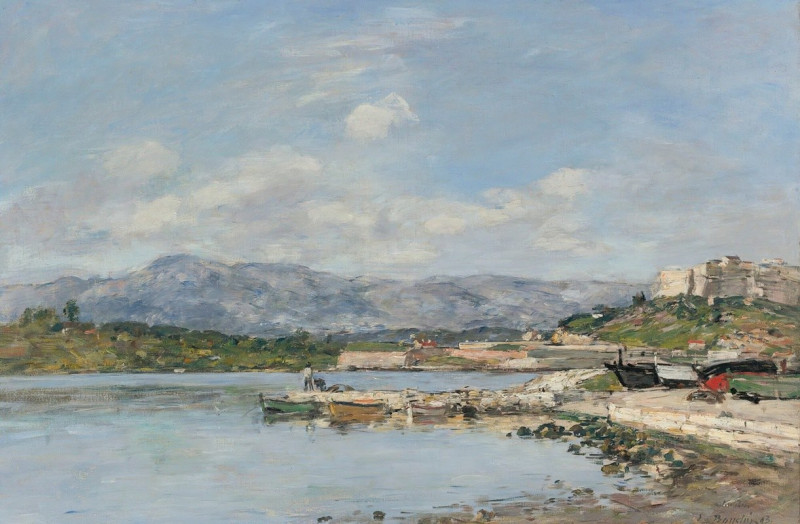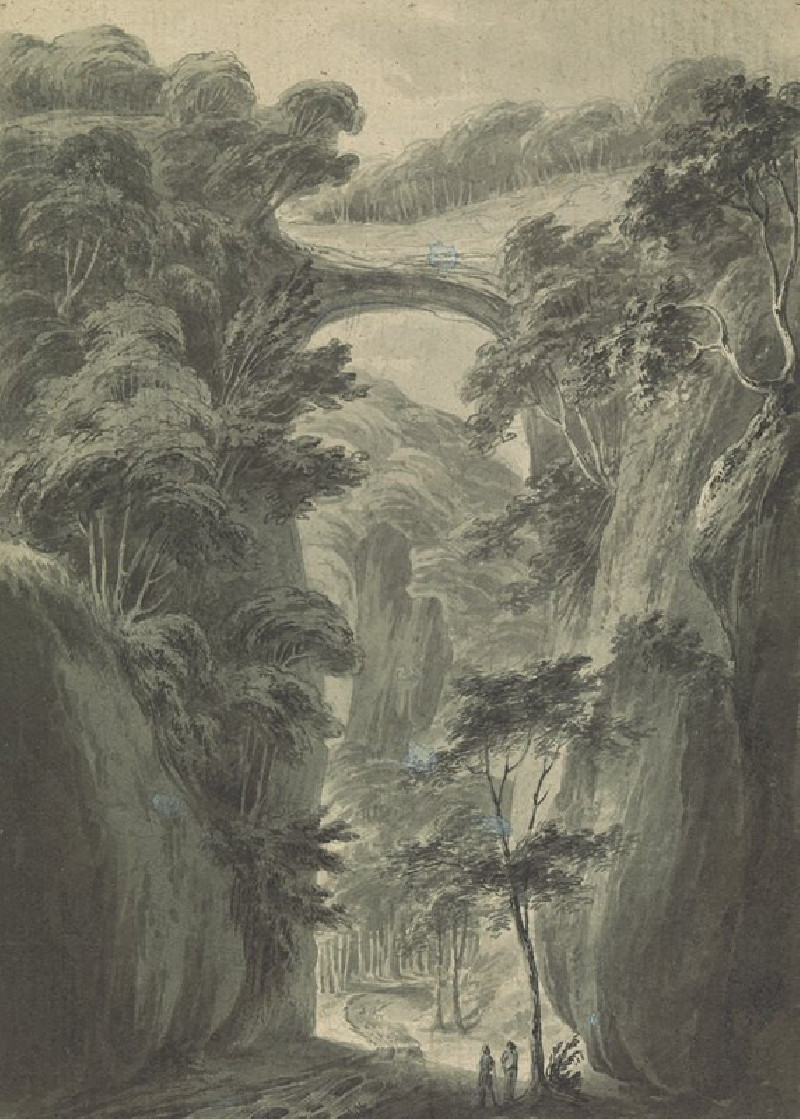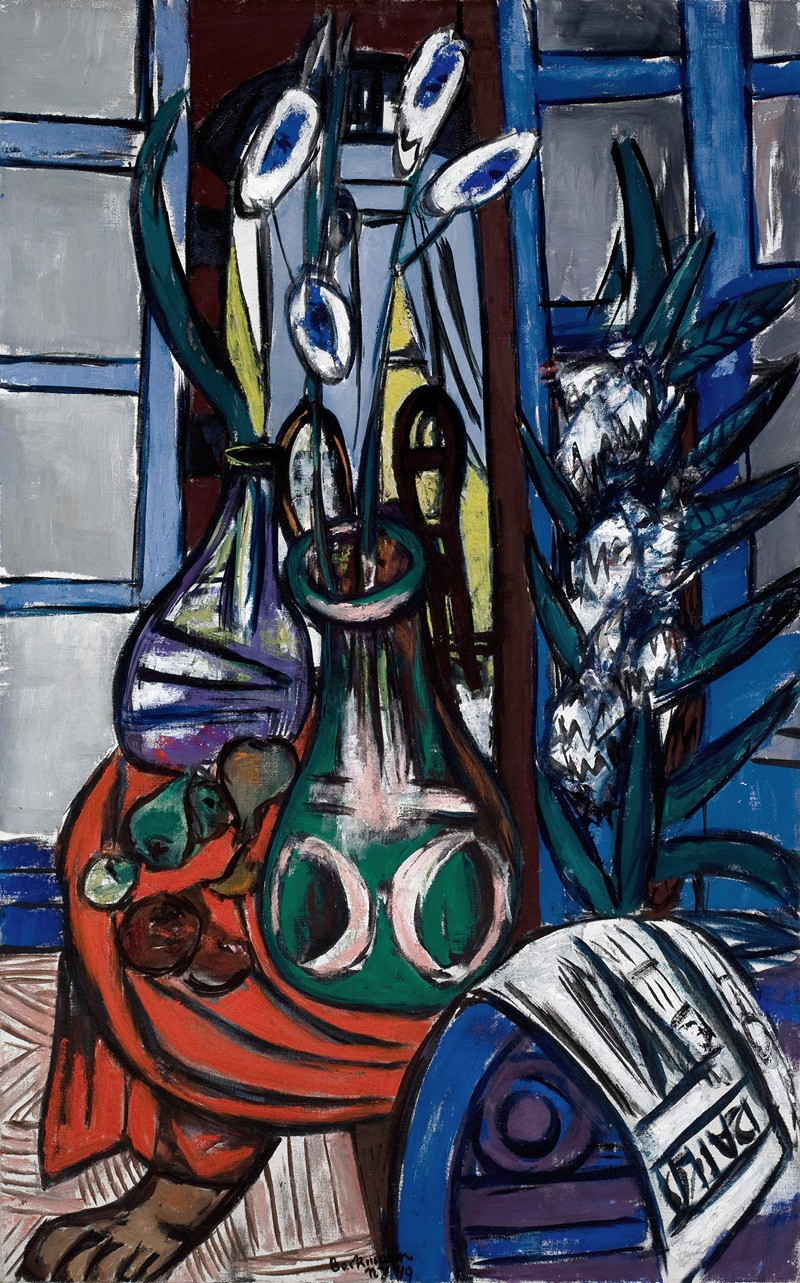Dusk (1895)
Technique: Giclée quality print
Recommended by our customers
More about this artwork
"Dusk" (1895) by Eugène Jansson captures the intriguing essence of twilight over a dense urban landscape. This expressive piece sees the fading light of day settling over the rooftops of a bustling city, shrouded in deep blues and softened, almost misty greys. The dynamic play of fading natural light against the dim glow peering through the building’s windows invites viewers into a deeply atmospheric scene, punctuating the quiet of the evening with hints of life within these structures.As Jansson uniquely focuses on the hues and tones that define early evening, "Dusk" becomes more than a representation of a cityscape; it becomes a reflection on solitude and the transition between day and night. The artist's trademark use of monochromatic blue palettes not only reinforces the subject’s mood but also enhances the painting's ethereal quality, drawing the viewer into a nearly palpable quietude that surrounds dusk.
Delivery
Returns
Eugène Fredrik Jansson (18 March 1862, Stockholm – 15 June 1915, Skara) was a Swedish painter known for his night-time land- and cityscapes dominated by shades of blue. Towards the end of his life, from about 1904, he mainly painted male nudes. The earlier of these phases has caused him to sometimes be referred to as blåmålaren, "the blue-painter".

